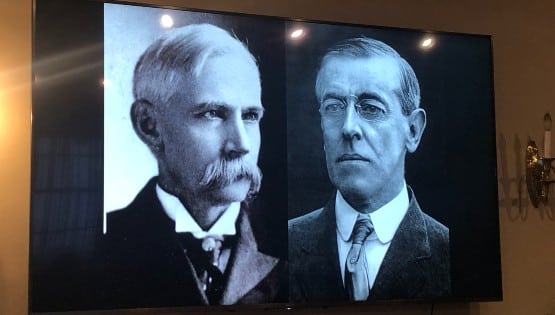
In the end, Madison’s and Jefferson’s assertions in the Virginia and Kentucky Resolutions failed. The National government ended up wresting the very powers that they feared. However, much of the early constitutional history of the US revolved around the arguments the two had made. The “states’ rights” argument was used by slavery proponents as justification for their nullification of national policy regarding the return of escaped slaves across state lines, and eventually led to the Civil War. The issue continues to arise even today around such policies as abortion and health coverage; the rights of states to represent their population in opposition to the national policy therefore, is still a constitutional question in the limited government formed by the US Federal system.
This lingering uncertainty was answered in the subsequent years of US history through such events as the US Supreme Court decisions that established the supremacy clause (McCulloch v. Maryland, and others), the slavery and nullification crisis, and finally the Civil War. However, this advancement did not come easily as the period was marked by several constitutional crises, with perhaps the most significant early constitutional crisis, that touched on the matter of supremacy of state versus federal government being the passage of the Alien and Sedition Acts. These laws, dealing with censorship in the press, immigration, treason, and related punishments, were enacted by national government, and then endorsed by a majority of the states as a means of securing the national safety and welfare during the early years of the country.
However, these laws were believed by many, including key founding fathers like Thomas Jefferson and James Madison to be unconstitutional. To respond to the aliens and Seditions Acts, Thomas Jefferson wrote the Kentucky Resolution, while James Madison came up with the Virginia Resolution. Both documents were protests to the set of National laws and eventually contributed to the constitutional problems faced later.
Let us look at, and contrast the arguments made by Jefferson and Madison in their respective dissertations. In their arguments, both founding fathers depended on a theory of a national compact in the establishment of the US Constitution, which argued that the states were the true representatives of the people, and that they had endorsed the national constitution, but only so far as it went in carrying out its limited powers enumerated in the Constitution. Madison (1798) wrote that the Virginia Assembly viewed the national government’s role “…as resulting from the compact, to which the states are parties; as limited by the plain sense and intention of the instrument constituting the compact.” His argument was that the states had a “right” and in fact were “duty bound” to “interpose” when the national government overstepped its role and sought powers that the states believed were beyond the limits of its authority. Jefferson (1799) agreed, declaring that if the national government were the sole authority regarding the limits of its authority, it would lead to the dissolution of the states and a construction of the nation on their ruins in a way that would “stop nothing short of despotism.” Jefferson was of the view that states had an “unquestionable right” to judge the National government’s infractions on their power and that “nullification” was the “rightful remedy.”
The two, individually relied on different approaches to make their points and justify their stance. Madison argued procedurally that the Alien and Sedition Acts had combined legislative and judicial powers under the executive, and had limited the rights of conscience secured under the Bill of Rights that had been passed as a means of securing ratification. Jefferson on the other hand argued politically that the other states had been unreasonable in their passage of the laws in a way that promoted despotism and criminality on the part of the government. Nonetheless, the fact that both men ultimately agreed that the states had a right to protest and even ignore the national government’s authority over such a momentous policy called into question the ultimate health of both the National Constitution and even the “compact” that they argued was at its heart.
References
- Jefferson, Thomas. (1799). The Kentucky Resolution. Accessed 10 June 2011. http://avalon.law.yale.edu/18th_century/kenres.asp.
- Madison, James. (1798). The Virginia Resolution. Accessed 10 June 2011. http://avalon.law.yale.edu/18th_century/virres.asp.










